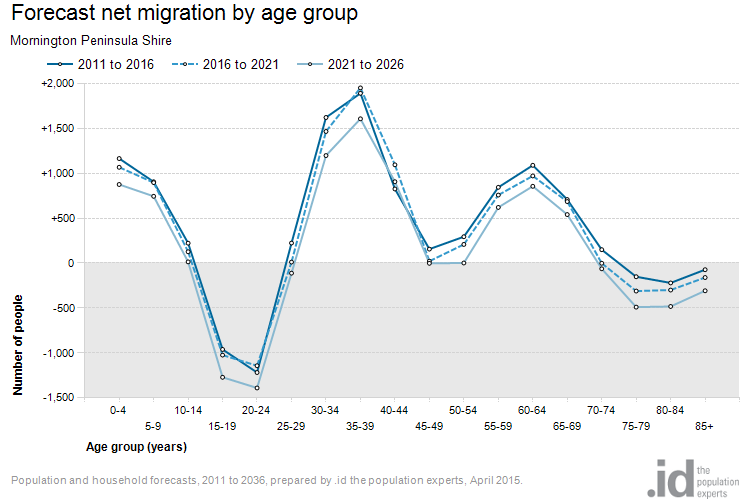We were thrilled to host our first Year 10 work experience student. Not many teenagers express an interest in cities, towns and how they’re changing, so we were happy to share our knowledge and experience with Riley from Brighton Secondary College. He was really interested in our population forecasting work so we asked him to write a blog highlighting the characteristics of an area in Melbourne with which he had some familiarity. Here’s Riley’s take on the population and housing future of the Mornington Peninsula.
Mornington Peninsula
The Mornington Peninsula as a whole is steadily growing. The population is forecast to grow by 14.3% between 2015 and 2036. That’s an additional 22,281 people! To accommodate this growth, 16,521 dwellings are forecast to be built between 2011 and 2036. Let’s drill down to some interesting areas within the peninsula.
Dromana-Safety Beach is the fastest growing area by population and dwellings. Between 2011 and 2036, its population is forecast to grow by 47.7%, from 8,963 to 13,241. This corresponds to its dwelling growth which is forecast to increase by 47.7% or 3,240 dwellings. Coming in second and third are Bittern-Crib Point and Hastings with their forecast population growth at 32% each and their dwelling growth at 36.0% and 34.7% respectively. Hastings, in particular, will develop a lot in the next 10 years due to the shipping port enlargement. Up until 2026, its average annual growth rate is expected to be around 1.61%, higher than Britten-Crib Point’s 1.13%. While these areas are growing rapidly, Rosebud – Rosebud West – McCrae – Boneo – Fingal – Cape Schanck, the second most populous area in Mornington Peninsula, has the largest forecast population growth by number with an addition of 6,172 people between 2011 and 2036.
In contrast, Flinders-Shoreham-Point Leo, Mooroduc-Tureong and HMAS Cerberus aren’t expecting any growth in the next 20 years, with their net population forecast to decrease slightly between 2011 and 2036. With HMAS Cerberus, it is interesting to point out that as a naval base, it is comprised largely of non-private dwellings. Its population is forecast to fall slightly over the period 2011 to 2036 (from 1,117 to 1,025 – a decline of 8.2%), with no change assumed in the number of private dwellings.
Migration is one of the most important components of population change. The net migration by age assumptions in Mornington Peninsula Shire are largely influenced by these four factors:
- Retirement migration to many parts of the City, especially areas in the southern Port Phillip coastal strip
- A significant loss of young adults (school leavers and people in their early twenties) to inner suburbs of Melbourne
- New couple and young family housing opportunities in Mornington, Mount Martha, Hastings, Rosebud, and Rosbud West
- Loss of older people aged 75+ years, moving to areas where they can access services and/or family support, alternatively moving into aged care facilities
Below is a chart showing Mornington Penninsula’s net migration by age group.

As you can see, the age group with the highest net migration in Mornington Peninsula Shire is 35-39 year olds while the age group with the highest net mirgation loss is 20-24-year-olds.
More information about Mornington Peninsula’s forecast population can be found here!
We thank Riley for this wonderful blog and hope you had a great time here at .id!












